A kitchen island can be a brilliant way to break up your space and allow for an extra surface for preparation, washing or cooking. Some choose to have their island stand on their own as a statement piece, whereas others will opt for a breakfast bar style, connecting the island to another block of units to create a peninsula. There are advantages to both, and both can look amazing when done well.
1. Assess the space
As with other kitchen plans, planning an island will need to start with an assessment of the area you have. It is important to do this so that you can ensure that your kitchen will work with an island in place. You will generally need at least 1m of space between the island and the run of units it will be near in the kitchen, to ensure that there is sufficient room for movement, traffic and opening of all cabinet doors. This can be a limiting factor and may mean that an island is not suitable for your room if you cannot accommodate this.
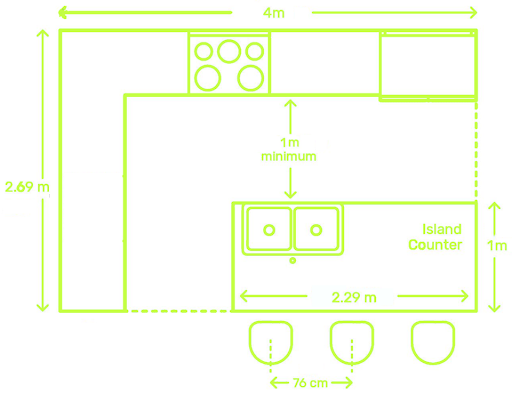
2. What will the island be used for?
The island itself is a very handy piece of extra space within the kitchen, but you have to make sure that you are taking advantage of it, otherwise it will just be an expensive novelty. One of the best ways to make use of it is to fit a hob or kitchen sink to the area. This gives you a place out of the way of the other surfaces and appliances to perform these tasks with plenty of room for keeping items you will be using while cooking or washing. If you were to choose to fit the hob to the island, it would mean you can also take advantage of a hanging extractor fan. These are a modern and stylish choice, which lets you bring the kitchen of your dreams to life. They can also be adapted into a breakfast bar, meaning you can use space previously taken by a table for this instead.
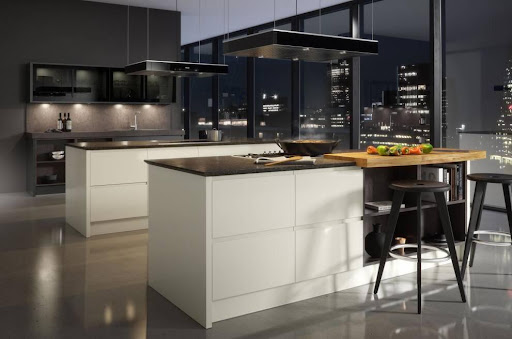
3. How is an island constructed?
Islands can be built in a few different ways depending on the budget, the skill of the carpenter and the style you’re trying to achieve within the room. We recommend using peninsula units, which are units with increased depth and an opening on both sides. These can be used then to hold the worktop and can be easily adapted to fit a sink or hob above them. They also allow you to use the full depth of the cupboard for storing larger items, and mean you can access items from both sides, allowing you to reduce traffic in the corridor of the kitchen. Another way in which it can be done is simply using standard units. This is ideal if you lack space for a full depth breakfast bar style island and allows you to achieve the look for less. Finally, if you are opting for the larger depth, but room for chairs or stools underneath, you can use standard depth units with supporting pilasters where the worktop overhangs.
We offer a range of peninsula units for a freestanding or connected peninsula island:
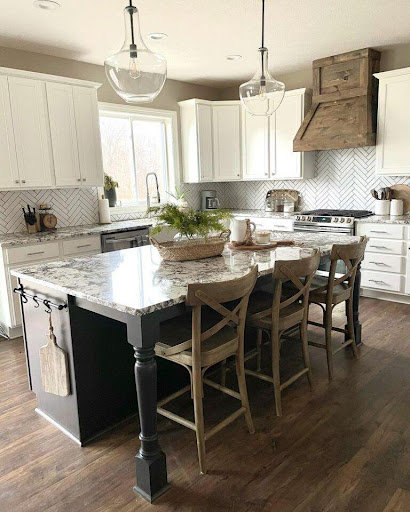
4. Extra elements
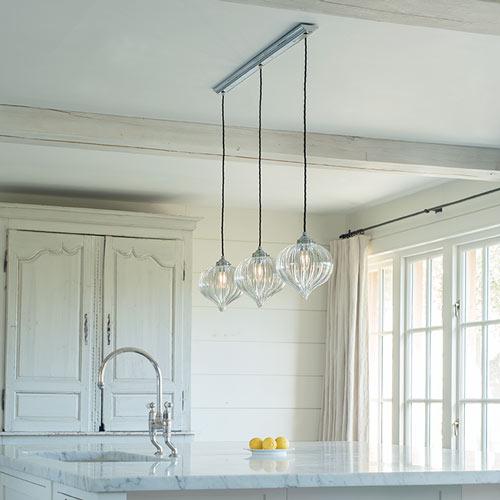
If you’ve chosen to go for an island, you may be considering what else you can add to it to help achieve your dream kitchen. Truth is, there are a huge number of possibilities that can be achieved. One of the most popular accessories to an island is a hanging light fixture. These can be functional, enabling much better visibility when working on the island, but also can be extremely stylish. Another great extra that can be added would be a contrasting worktop, as pictured below. These can help to add an extra layer to the design and coordinate well. Additionally, they can function as a breakfast bar, or extra counter space.
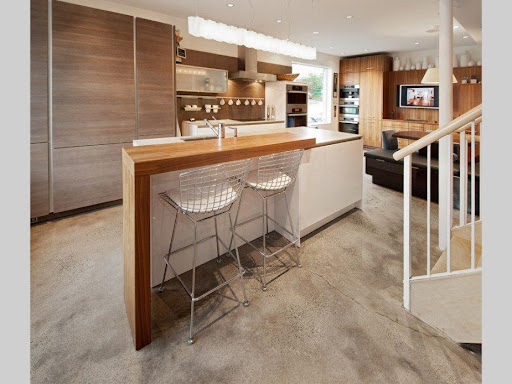
Practical Advantages
- Extra worktop space for preparing meals
- Deep storage for large items
- Can replace a dining table with a more multipurpose
Cosmetic Advantages
- Can be used to contrast with the rest of the kitchen
- Divides up the kitchen
- Can be accessorised to add more character to the room
Overall, we believe an island to be the hallmark of a modern and functional kitchen, while also providing the attractiveness and style needed. So, if your room can accommodate one, we say to go for it. We are able to provide advice and help you with any enquiries you may have, our highly trained office team are available between 9am and 4:30pm Mon-Fri. You can contact us either via phone or email.


